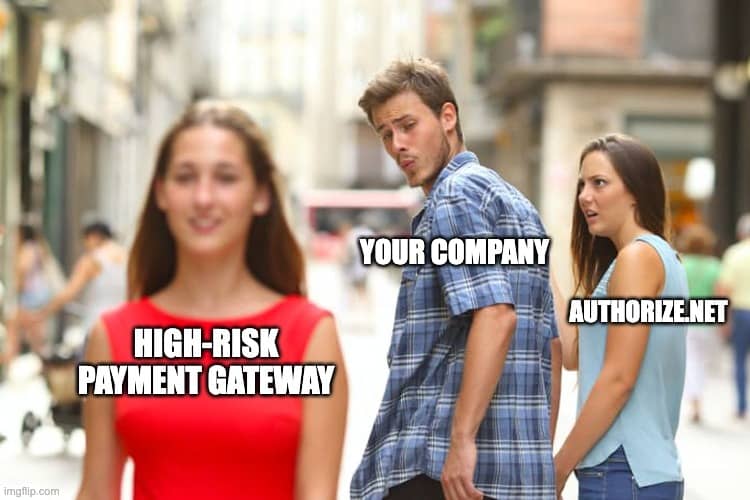Chargeback Stats Merchants Need to Know

Any business that accepts credit or debit cards as payment—or is considering accepting these forms of payment—should be aware of how chargebacks impact their business. This especially applies to businesses that operate in a high-risk payment processing industry. Knowing recent chargeback stats will give you deeper insight as to why you need a reliable high-risk payment processing services provider. These statistics reveal how consumer shopping has changed dramatically over the past few decades as well as how the chargeback process has not kept up with these changes. Most importantly, by taking a look at chargeback statistics, you can see how the chargebacks themselves often result in unintended consequences for high-risk merchants. Let’s take a closer look at chargebacks.
History and Changes of Chargebacks
Chargebacks were designed more than 40 years ago to be a consumer protection mechanism to build public confidence in credit cards. Since then, the way we shop has changed dramatically, but the chargeback process has stayed pretty much the same. That means today’s chargebacks have unintended consequences for many merchants.
Chargeback Statistics Merchants Need to Know
Some merchandise is more at risk of chargeback fraud due to a combination of risk factors, including price, traceability, country of origin, and product category. If you sell clothing, high-end merchandise, furniture, products that are easily translated into cash (e.g., gift cards), you are likely considered a high-risk merchant.
A study by ClearSale shows the most common reasons given for customers to file a chargeback. Some of the more notable percentages are as follows:
- 3%: Order was billed twice, or other clerical errors
- 4%: Product didn’t match the website description
- 4%: Product didn’t meet customer’s expectations
- 15%: Retailer shipped the wrong product
- 26%: Product never arrived
- 30%: Purchase was made with a stolen credit card
The ClearSale study goes on to break down the average chargeback ratios by industry (these numbers don’t seem high at first, but most service providers restrict or cancel merchant accounts if they approach 1% chargeback-to-transaction ratio):
- All industries: 0.60%
- Software: 0.66%
- Financial services: 0.65%
- Media and eContent: 0.56%
- Retail: 0.50%
- Travel: 0.50%
- Gaming: 0.43%
Also notable is that 86% of all chargebacks are probable cases of friendly fraud, and merchants lose $2.40 for every dollar of chargeback fraud. In total, fraud costs the average merchant 1.47% of their total revenue. If these stats don’t provide a clear enough picture of how fraudulent chargebacks can impact your business, check out the stats below:
- 81% of customers freely admit to filing a chargeback out of convenience. Most customers can’t see any difference between a chargeback and a standard return. They either don’t know—or don’t care—about how a chargeback negatively impacts merchants.
- A customer who successfully files a chargeback is nine times more likely to file another one, and 40% of customers who file a chargeback will file another one within 60 days.
- Merchants only hear from 4% of dissatisfied customers, and only 1 in 20 customers will call and complain if there is an issue with their order. The remaining 19 are at risk of filing a chargeback.
Chargebacks increase 41% every two years. The issue will only get worse as the problem spreads to other markets like the EU, Japan, and China. The financial impact of chargebacks will reach close to $30 billion by 2020. At the current rate, the amount merchants lose in revenue, merchandise, shipping costs, and fees due to chargebacks could approach the $30 billion mark by the end of the decade.
What Do These Stats Mean for Merchants
Chargebacks are one of the greatest threats facing modern businesses. Friendly fraud flies under the radar disguised as a valid transaction. Then, long after the transaction is complete, the cardholder claims that the merchandise was not as described, that they never received the item or any number of potential triggers, and demands a chargeback. Merchants take the brunt of the hit, losing revenue from the sale, merchandise, and the cost of shipping. Merchants then get hit with additional chargeback admin fees and have the possibility of losing the ability to process credit card payments.
The risk of chargebacks and friendly fraud is real, which is why you need a merchant services provider who is fighting in your corner to protect your business. Zenti has chargeback prevention methods in place and can help you identify potential fraud triggers, implement and maintain business best practices, analyze risk, and dispute chargebacks. With our first-class chargeback management services, we have helped businesses just like yours that need high-risk payment processing services. Contact us today to learn more about our high-risk payment processing solutions.
Read Next

Find out whether Authorize.Net works for high risk merchants, what restrictions you might face and how to get approved.

Get expert advice on selling CBD products on Shopify, including compliance tips and setting up secure payment options.

Find out why Square may deactivate merchant accounts and steps to resolve issues and maintain uninterrupted payment services.
Need a High-Risk Merchant Account?
Disruption-free payment processing at the best price for your situation, guaranteed.
Get Free Guidance Now!